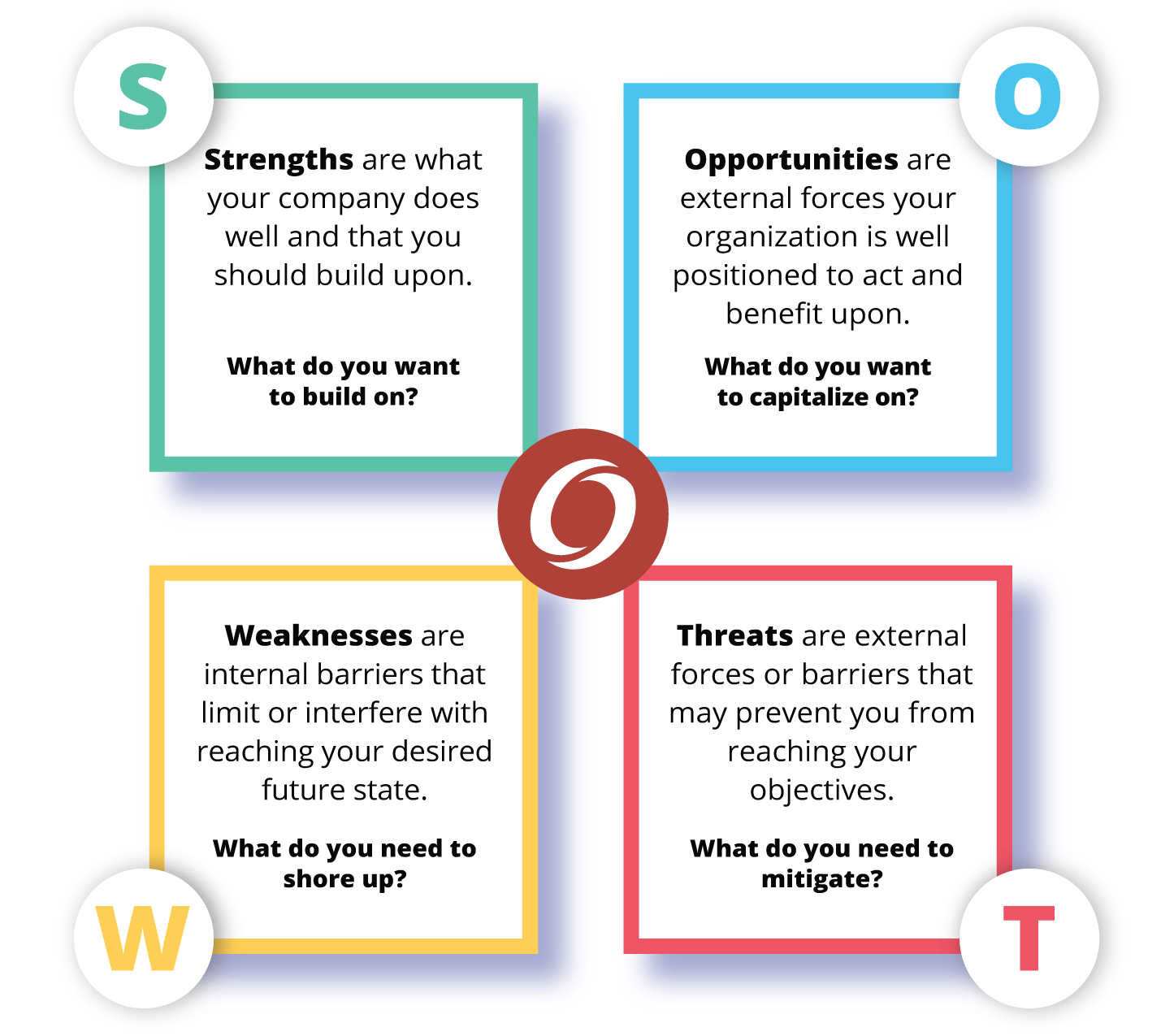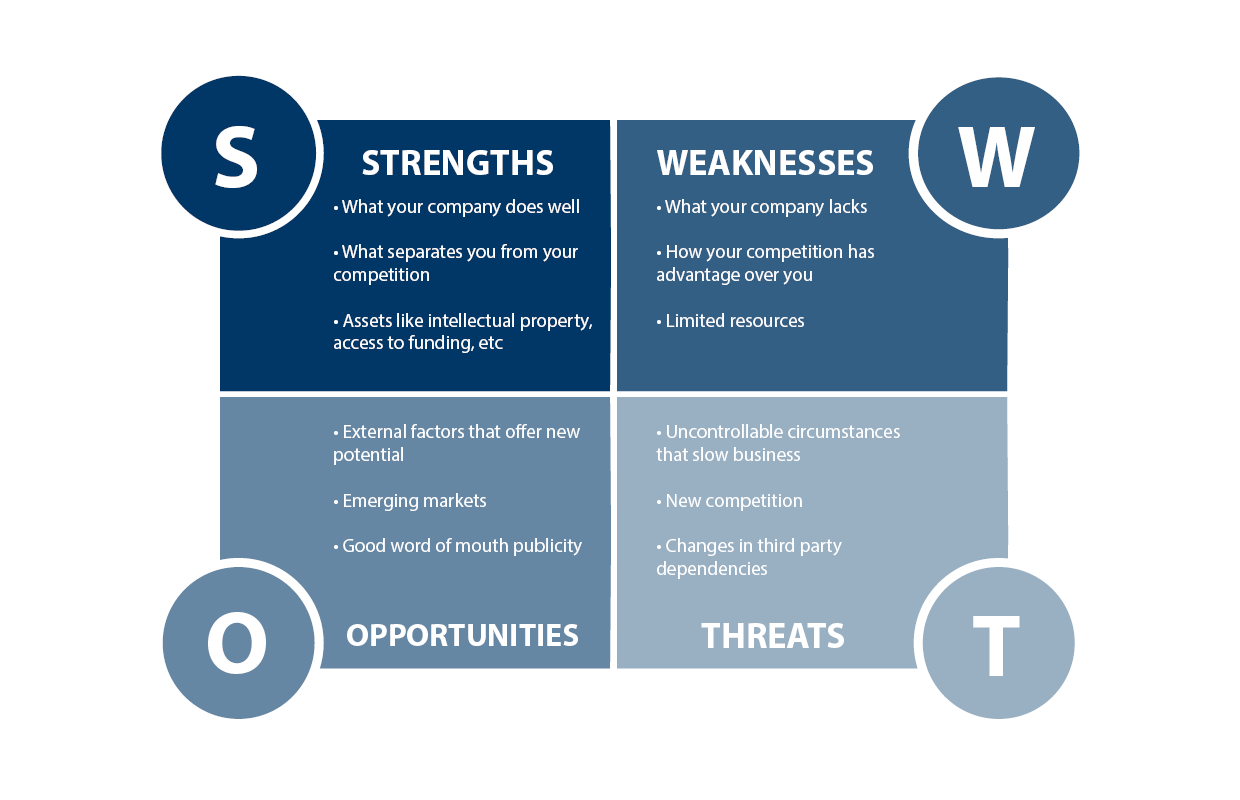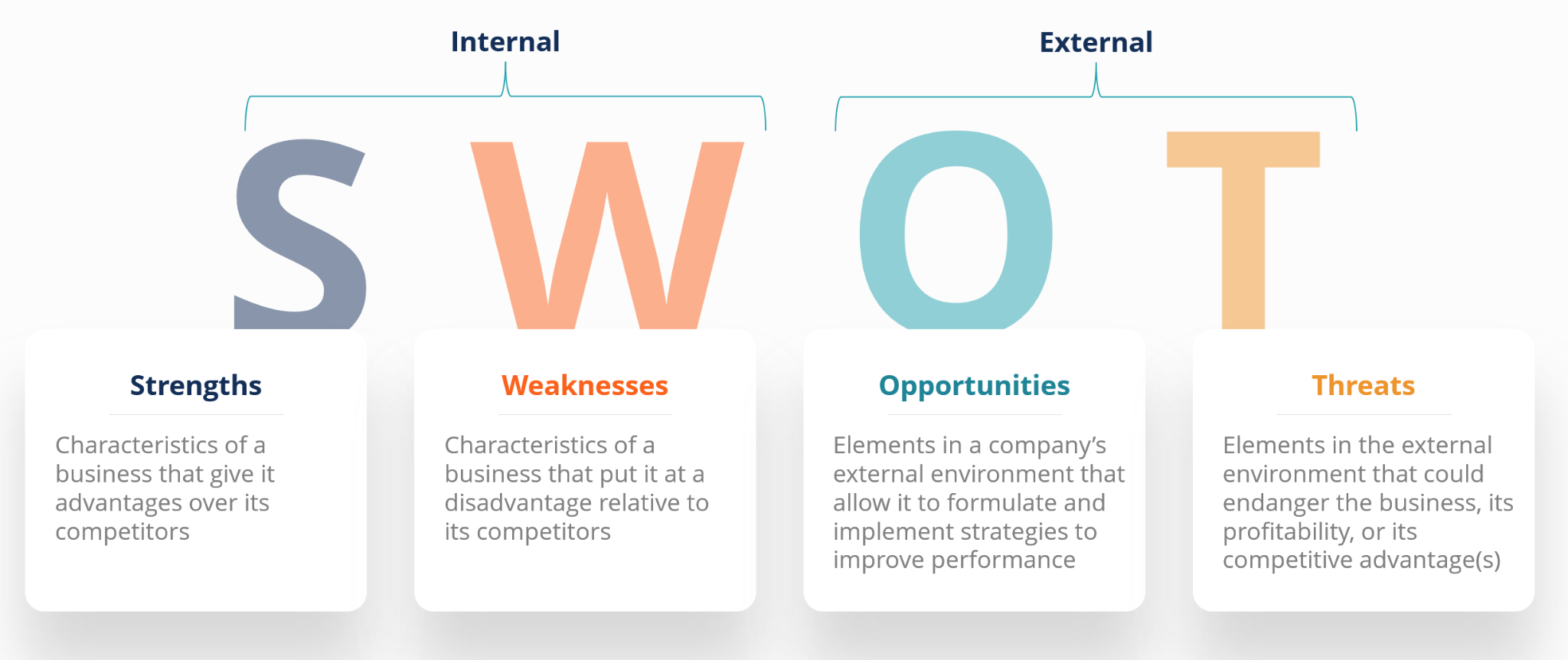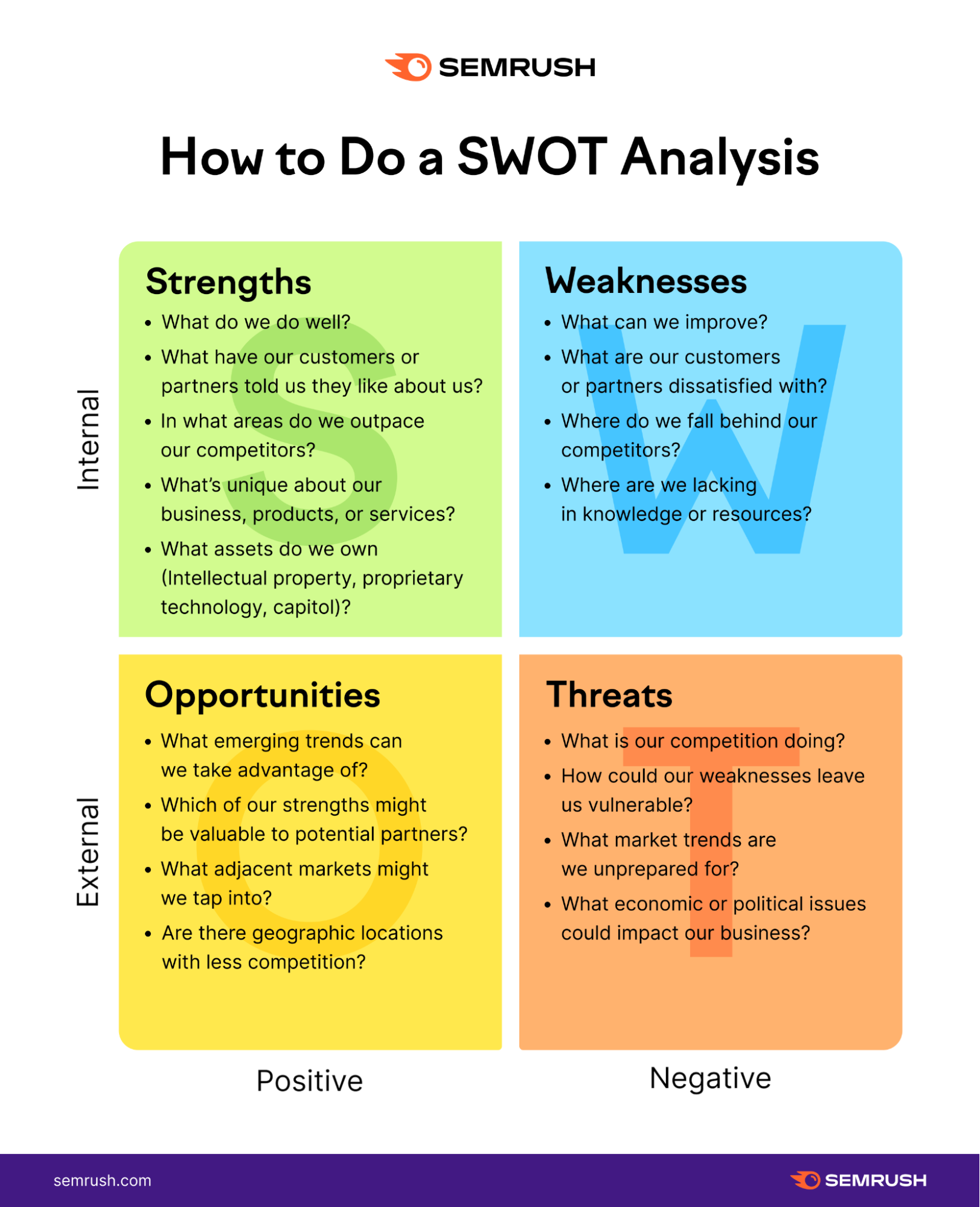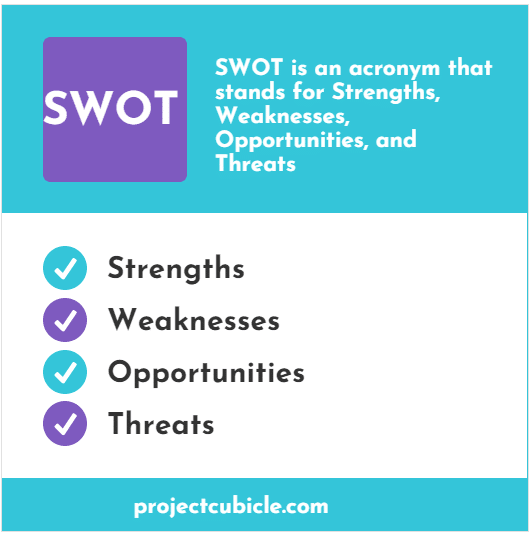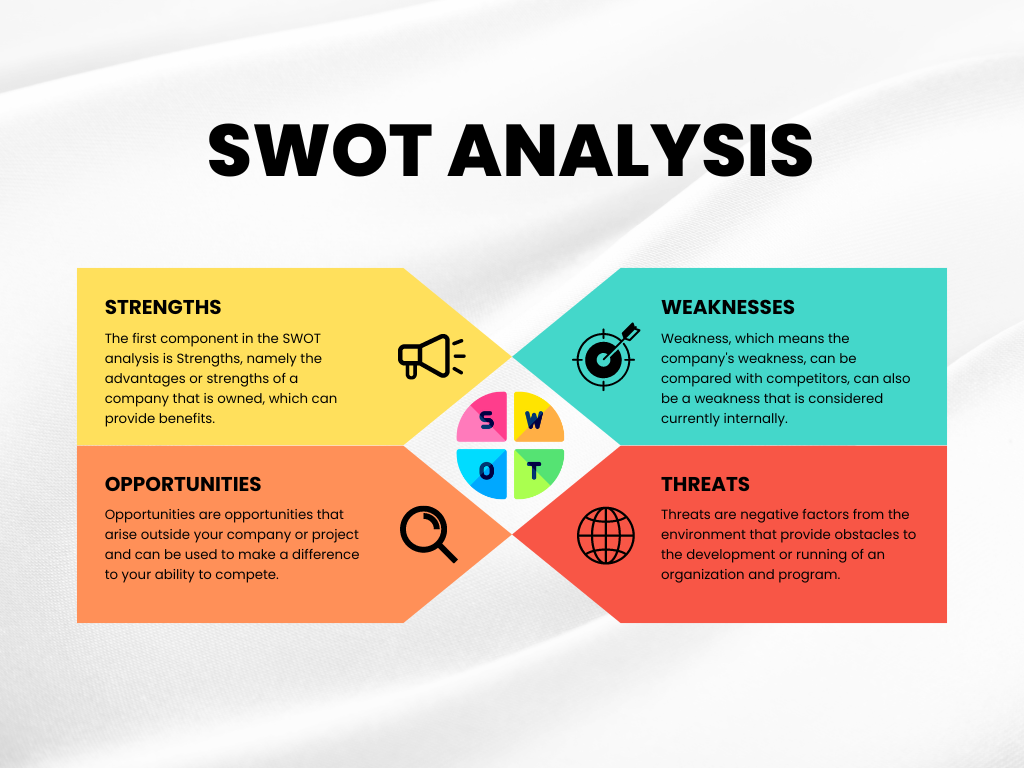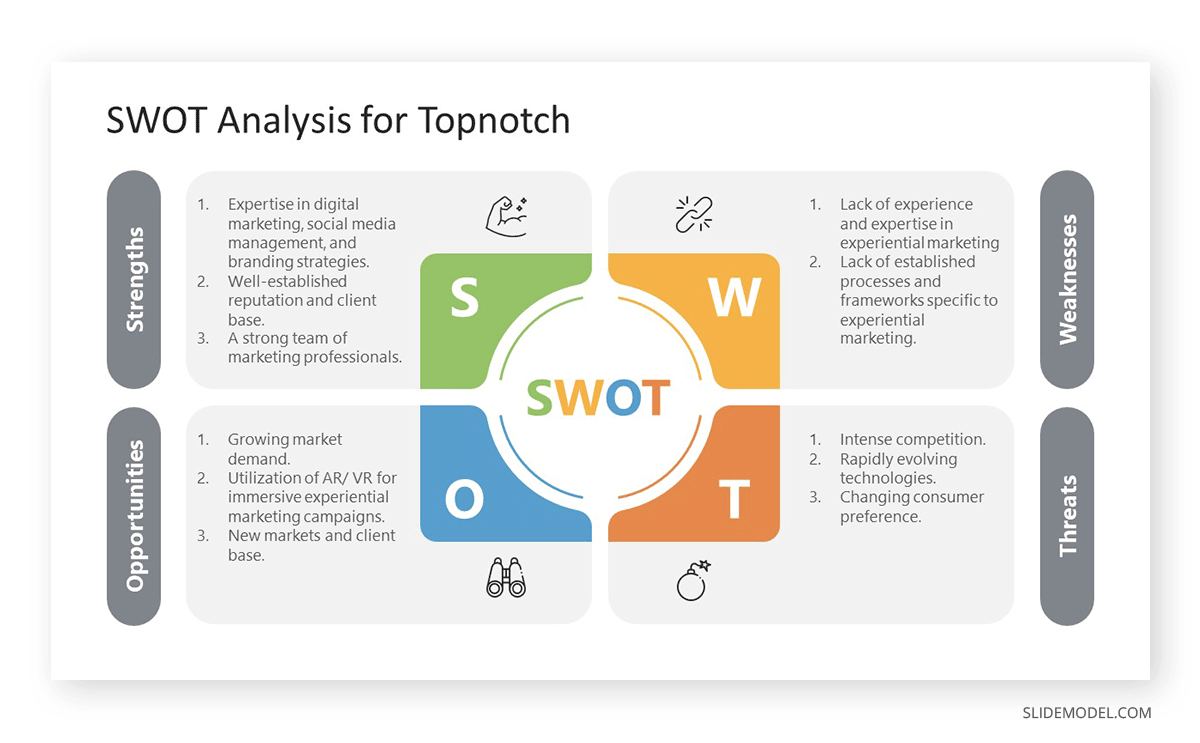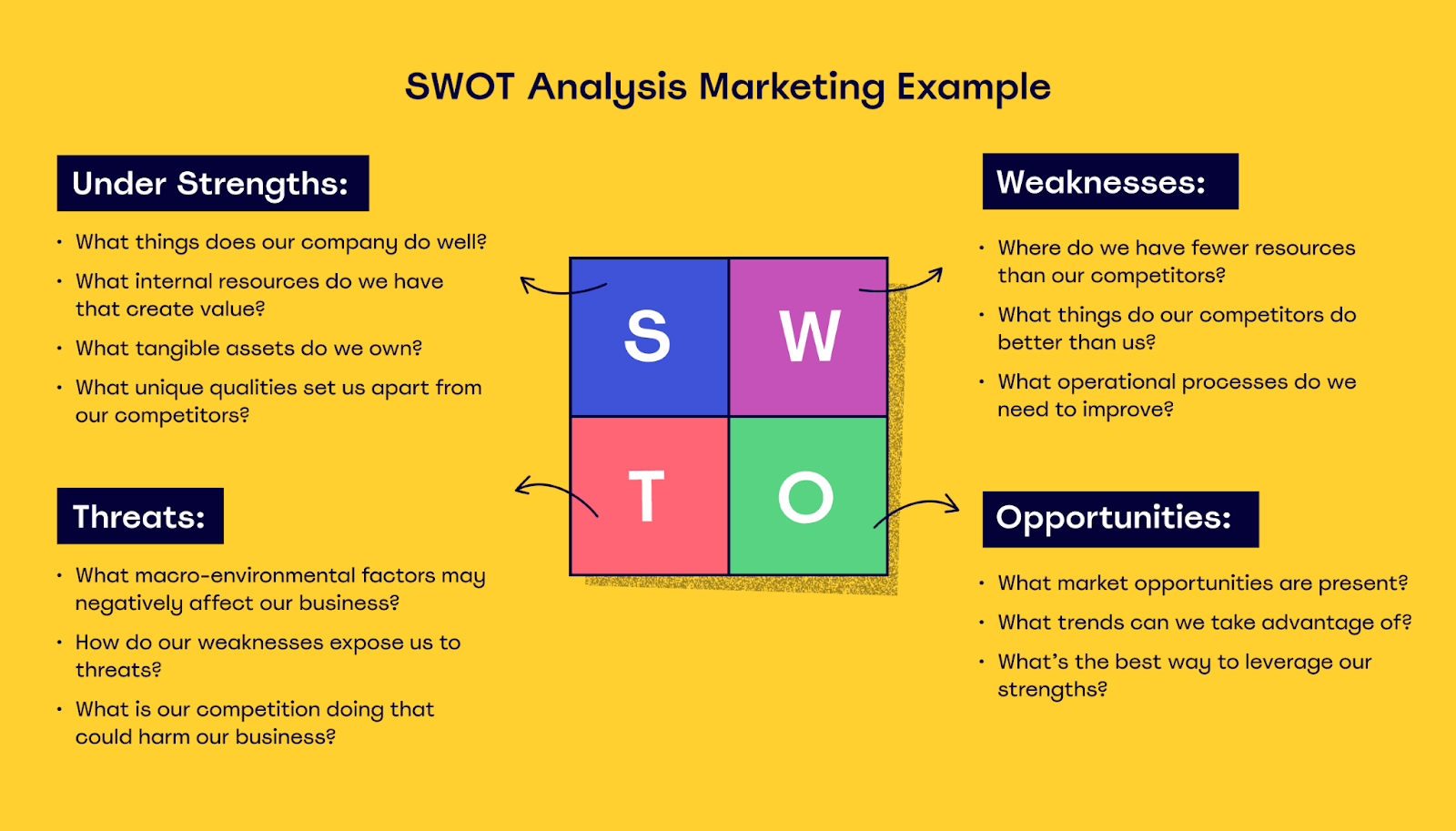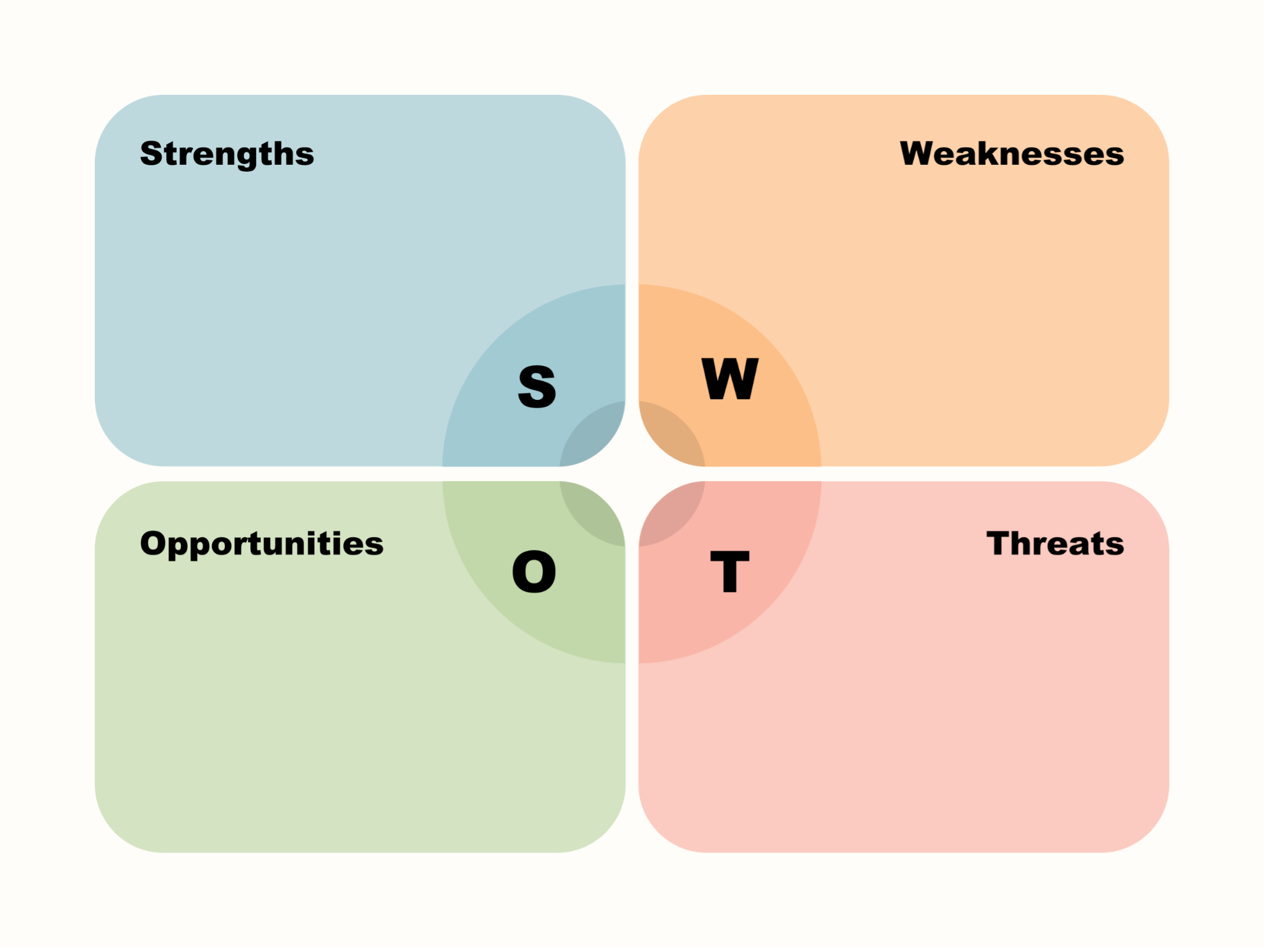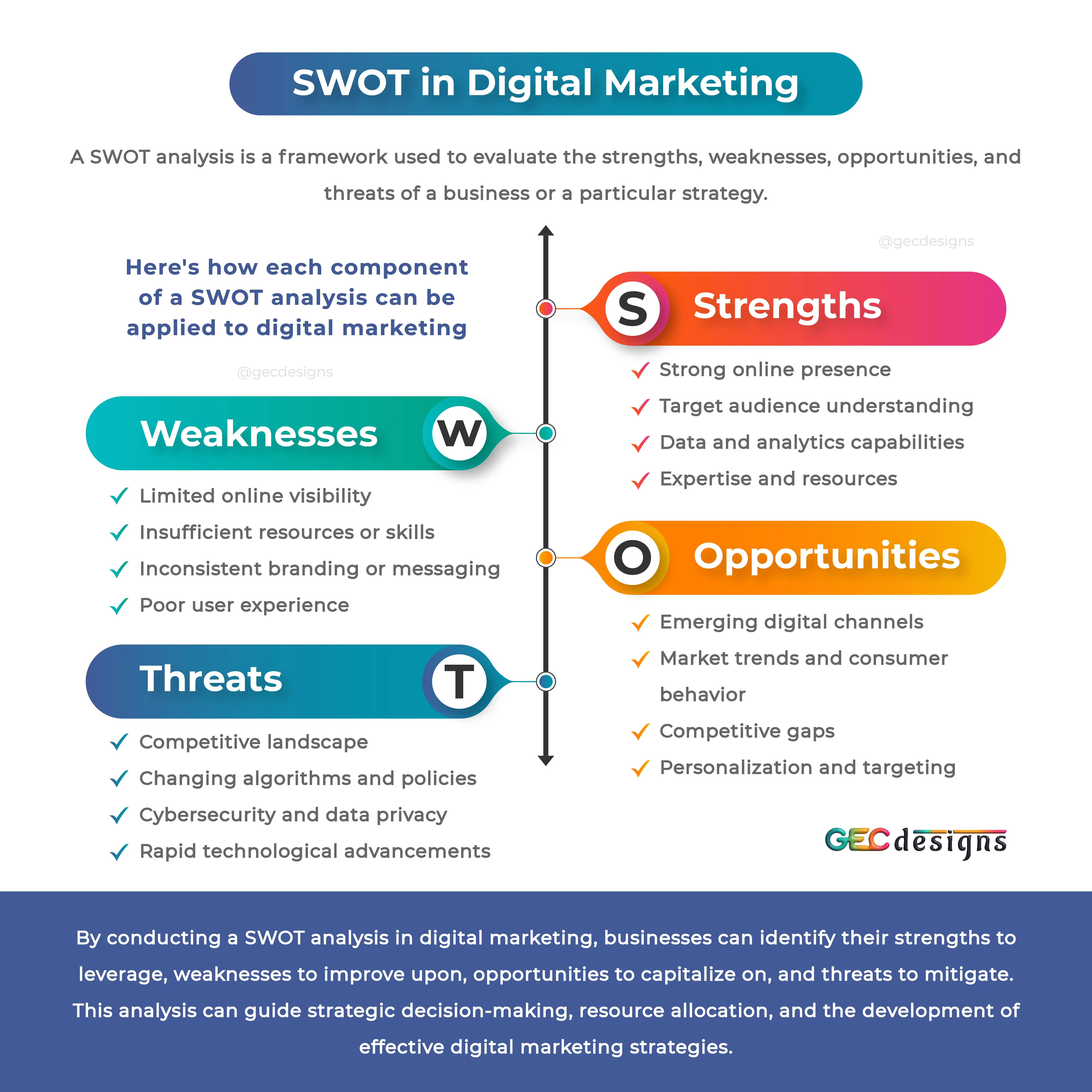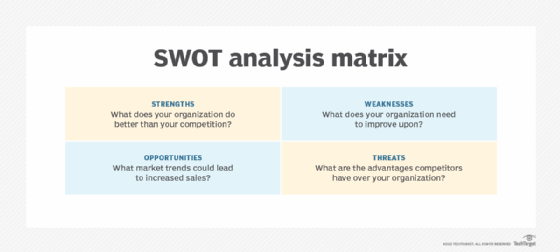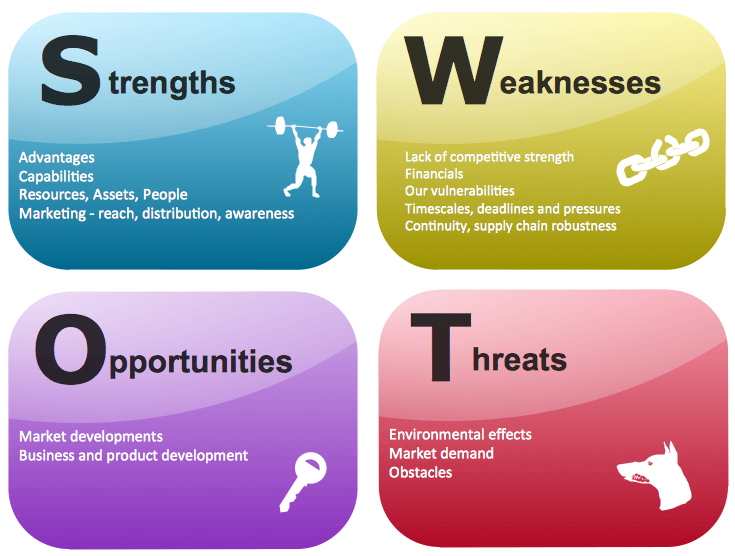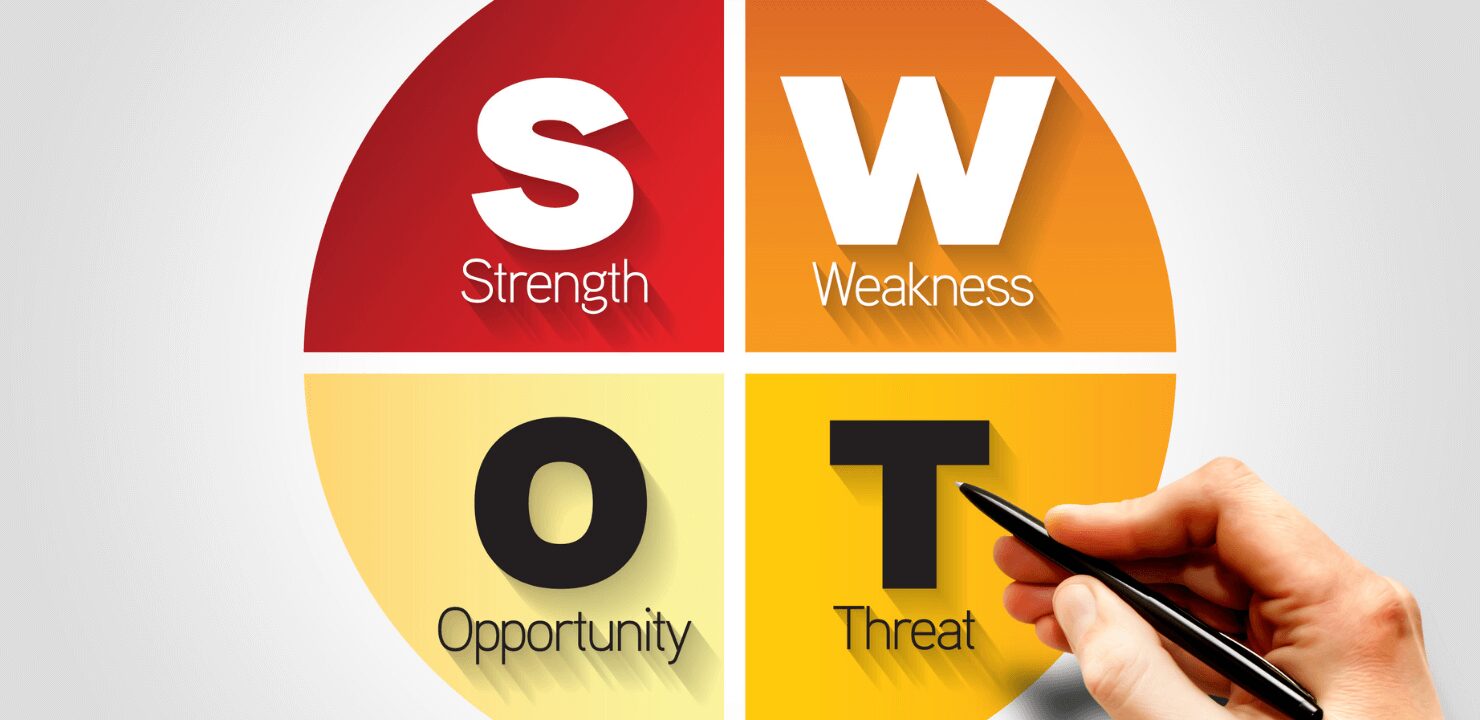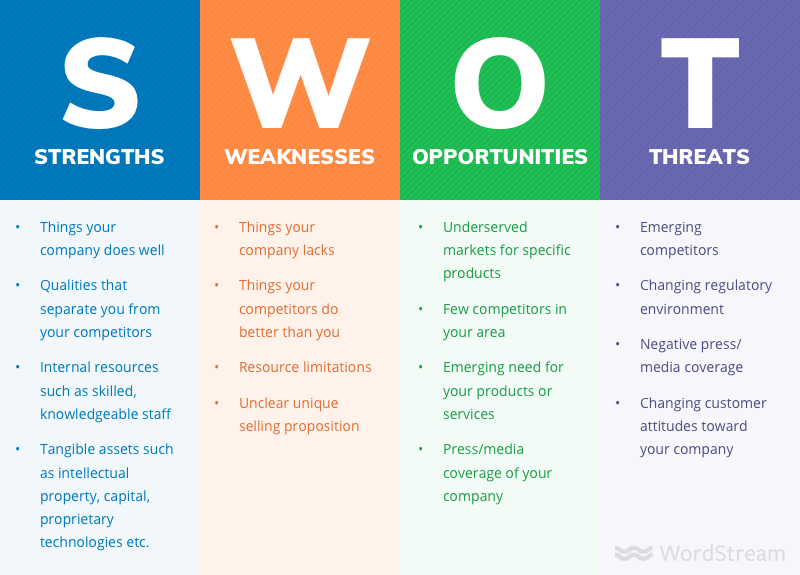What Does Swot Stand For In Marketing
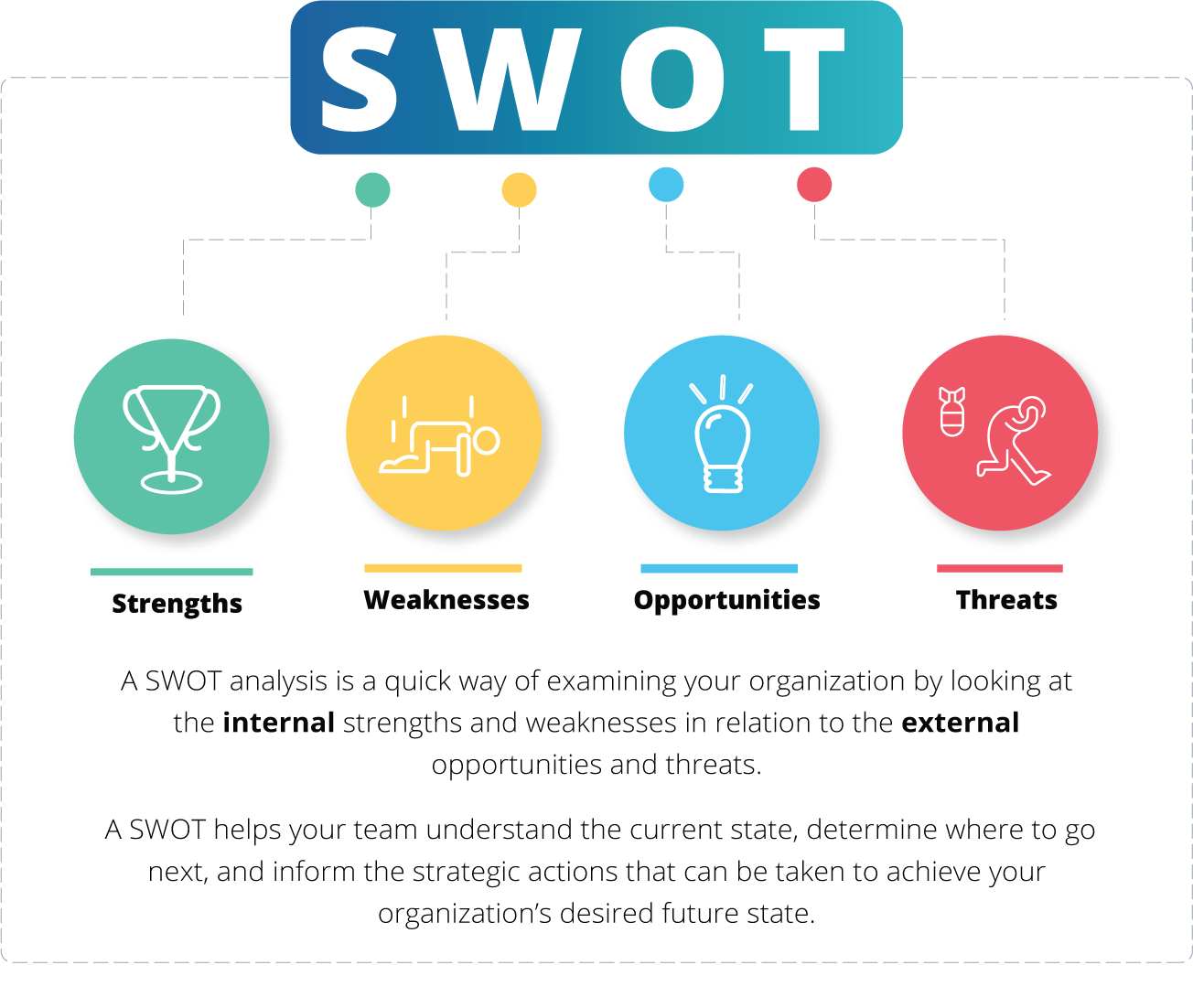
Imagine you're standing at the edge of a vast, unexplored territory. The wind whips around you, carrying whispers of opportunity and warnings of potential dangers. This territory is your market, your business landscape. How do you navigate it successfully? That's where a powerful tool, often represented by a simple acronym, steps in to guide you.
This tool is the SWOT analysis. It's a strategic planning method used to evaluate the Strengths, Weaknesses, Opportunities, and Threats involved in a project or business venture. Think of it as your internal and external compass, helping you chart a course toward success.
Unpacking the Acronym: What Does SWOT Stand For?
SWOT stands for: Strengths, Weaknesses, Opportunities, and Threats. Each element plays a crucial role in understanding the complete picture of a business or project's environment. Let's delve into each aspect individually.
Strengths: Your Internal Advantages
Strengths are the characteristics of a business that give it an advantage over others. These are internal, positive attributes that you can control. Think of your core competencies, experienced staff, innovative products, or a strong brand reputation.
These are the things you do exceptionally well. Identifying your strengths allows you to leverage them for further growth and success.
Weaknesses: Areas for Improvement
Weaknesses, on the other hand, are internal characteristics that put you at a disadvantage relative to others. These are also internal and can be controlled. This might include lack of resources, outdated technology, poor customer service, or a weak brand image.
Acknowledging your weaknesses is crucial for developing strategies to mitigate them. Addressing these shortcomings can lead to significant improvements in performance and competitiveness.
Opportunities: External Factors to Capitalize On
Opportunities are external factors that the business could exploit to its advantage. These are external and generally outside your control. Examples include emerging markets, changing consumer preferences, technological advancements, or favorable government policies.
Recognizing and seizing opportunities can provide a significant boost to growth and market share. Adaptability is key when it comes to external factors.
Threats: External Factors to Mitigate
Threats are external factors that could cause trouble for the business. Like opportunities, these are external and beyond your direct control. Common threats include increased competition, economic downturns, changing regulations, or negative press.
Identifying potential threats allows businesses to develop contingency plans and strategies to minimize their impact. Proactive planning is essential for navigating potential challenges.
The Significance of SWOT in Marketing
The SWOT analysis is a foundational tool in marketing because it provides a framework for strategic planning. It allows businesses to gain a deeper understanding of their competitive landscape. By analyzing the four elements, companies can make informed decisions about resource allocation, marketing strategies, and overall business direction.
The information allows businesses to tailor marketing campaigns to specific strengths and opportunities. This helps to counteract weaknesses and mitigate potential threats. The process is not about simply listing items, but about analyzing their interrelationships.
SWOT helps businesses to proactively plan and adapt to ever-changing market dynamics. The ultimate goal is to optimize marketing efforts, improve performance, and achieve sustainable growth.
A Tool for Continuous Improvement
In conclusion, the SWOT analysis is more than just an acronym. It's a dynamic framework that empowers businesses to understand themselves and their environment. It's a process of reflection, analysis, and strategic planning.
By embracing the principles of SWOT, businesses can navigate the complexities of the market with greater clarity and confidence. Consider it an ongoing journey of self-discovery and continuous improvement, leading to a stronger and more resilient business.
